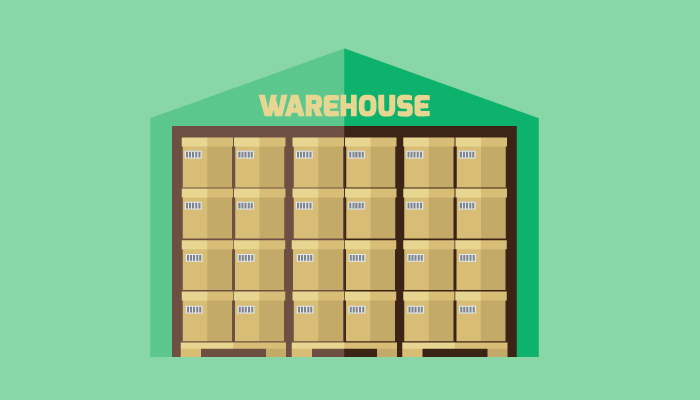We use cookies to make your experience better. To comply with the new e-Privacy directive, we need to ask for your consent to set the cookies. Learn more.
Utilizing Vertical Space in E-Commerce Fulfillment Centers
Vertical space has been a hot-button issue in warehousing for a long time, but with the rise of e-commerce, boosting clearance height is virtually required for fulfillment operations to remain competitive.
The increased value of vertical space in fulfillment centers stems from a sea-change in shopping culture, driven by online shopping.
Mail-order catalogs like the iconic Sears, Roebuck, and Co. "Big Book" anticipated the current vogue for shopping at a distance. But unlike previous generations of shoppers, today's online buyers expect lightning-fast turnaround, with two-day delivery quickly becoming the industry standard.
That means fulfillment centers must be geographically closer to their markets. The larger the urban center, the more orders a provider can quickly get into the hands of buyers. There's only one problem: Real estate sells at a much higher price in these coveted locations.

The Three-Level Mezzanine Picking System
With a 36-foot clearance at a fulfillment facility, operations can implement a three-level picking system to maximize picking efficiency. That's a must when you're expected to fill orders the instant they arrive.
Pickers don't have to range throughout the entire facility every time they go on a wave, though. Consider building an "active area" into a three-level facility. Fill this designated space with a smaller number of high-demand items. That way, pickers can simply travel through a small and well-known area, periodically refreshing the active area with SKUs from further regions of the warehouse.
Other Vertical Space Issues for E-Commerce Fulfillment
While aisles are the lifeblood of any storage facility, it pays to think about how to build upwards in supportive areas of the warehouse as well.
For instance, most indoor material handling applications use electric forklifts to handle pallet loads. That means they're required to provide an OSHA-approved battery room for the storage, charging, and maintenance of forklift batteries.
In the past, battery rooms tended to sprawl out at floor level. Not only does that floor plan eat up space that could be devoted to revenue-generating storage and picking tasks, it also limits efficiency during battery changes.
The solution is to take advantage of extra clearance height in the battery room, just as you would in aisles. Choose battery system stands that are three — or even four— tiers high. With an accompanying Operator Aboard Battery Extractor that has quick, simple access to any stand in the system, you'll be able to safely reduce change-out times to mere minutes.
Envisioning the Vertical Fulfillment Center
Imagine the ideal distribution center for e-commerce. It's centrally located in a populous urban area. At least three levels of storage aisles provide quick, easy access to every SKU. Forklifts are powered by a tall battery room with a minimal footprint.
Thanks to e-commerce, this is the fulfillment center of the future. Here's the thing, though. The future is now.
Reference:
Douglas, Merril. “E-Fulfillment Strategies That Deliver the Goods.” InboundLogistics. Thomas Publishing Company, May 2013. Web. 22 Sept. 2016.
Pierce, Freddie. “Taking advantage of vertical warehouse space.” SupplyChainDigital. Supply Chain Digital, 26 Oct. 2011. Web. 22 Sept. 2016.
Williams, Del. “Put Vertical Space to Work.” MHLNews. Penton, 17 Jan. 2012. Web. 22 Sept. 2016.
